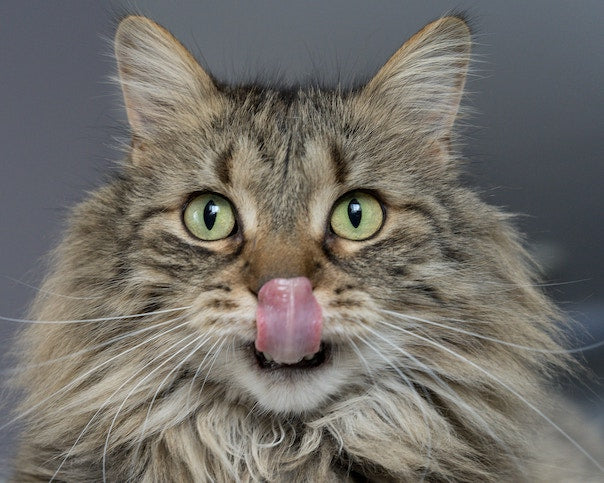Bladder stones are a common problem in cats and can occur in both males and females. In this article you will learn everything you need to know about the causes, symptoms and treatment options for cat bladder stones in order to help your four-legged friend with this problem.
Causes of bladder stones in cats
There are several factors that can contribute to the formation of bladder stones in cats, including:
- Diet: An unbalanced diet can promote the formation of bladder stones. In particular, a high content of minerals such as calcium, phosphorus and magnesium in the diet can lead to stone formation.
- Hydration: Insufficient fluid intake can cause urine to be more concentrated, making it easier for minerals to be deposited and stones to form.
- Urinary Tract Infections: Bacterial infections can increase the risk of bladder stones by changing the composition of urine.
- Genetic predisposition: Some breeds of cats, such as Persian cats, Maine Coons or British Shorthairs, have a genetic predisposition to developing bladder stones.
Symptoms of bladder stones in cats
If your cat is affected by bladder stones, the following symptoms may appear:
- Frequent urination: Affected cats may try to urinate more often than usual, but only pass small amounts.
- Painful urination: Cats with bladder stones may have painful urination, which may include loud meowing, restlessness, or licking the genital area.
- Blood in the urine: Bladder stones can cause bleeding in the bladder, which can cause blood to appear in the urine.
- Obstruction of the urethra: In severe cases, bladder stones can obstruct the urethra, leading to a life-threatening condition as the cat is unable to urinate. If you notice your cat not urinating at all, you should see a vet immediately.
Diagnosing bladder stones in cats
If you suspect your cat has bladder stones, it is important to consult a veterinarian. The vet will do a variety of tests to make the diagnosis. This includes:
- Physical Examination: The vet will examine your cat for signs of pain or an enlarged bladder.
- Urine test: A urine test can help detect infections or abnormalities in the composition of the urine that could indicate bladder stones.
- X-rays or ultrasound: These imaging tests can help identify the size, shape, and location of bladder stones and determine if surgical removal is necessary.
Treatment of bladder stones in cats
Treatment for bladder stones in cats depends on the type of stones, their size, and their severity. Here are some treatment options the vet might consider:
- Diet Adjustment: One of the first things you can do to treat bladder stones in cats is to switch to a special diet specifically designed to prevent stones from forming. These diets are typically low in minerals that contribute to stone formation and contain substances that help dilute urine and reduce stone formation.
- Drug Treatment: In some cases, the vet may prescribe medication to help dissolve the stones. However, this is not possible with all types of bladder stones and depends on the composition of the stones.
- Surgical removal: Larger stones or those blocking the urethra may require surgery to remove the stones. This may involve a cystotomy (opening the bladder to remove the stones) or a urethrotomy (opening the urethra to remove a trapped stone).
- Fluid Therapy: In cats suffering from obstruction of the urethra, it may be necessary to give fluids intravenously to support kidney function and restore urine flow.
Prevention of bladder stones in cats
To reduce the risk of developing bladder stones in your cat, you can take the following steps:
- Eat a balanced diet: Make sure your cat is getting a balanced, high-quality diet that meets their nutritional needs without providing excessive amounts of minerals that can contribute to stone formation.
- Encourage hydration: Encourage your cat to drink more water by placing several water bowls around the house or using dedicated drinking fountains. Adequate hydration helps dilute urine and prevent bladder stones from forming.
- Keep Your Litter Box Clean: A clean and easily accessible litter box encourages regular toileting and helps keep urine flowing. Clean the litter box daily and make sure it is placed in a quiet and stress-free environment.
- Reduce Stress: Stress can lead to urinary tract problems in cats, including the formation of bladder stones. Try to minimize stress factors in your cat's environment by providing sufficient retreats, scratching posts and toys. Using pheromone diffusers can also help reduce stress.
FENISKA Base for the litter box
Feniska Base is an innovative smart gadget specially designed to monitor cats' toilet visits. By integrating state-of-the-art technology, Feniska Base offers valuable information and insights into your cat's urinary behavior. In this section you will learn how Feniska Base can help identify and treat bladder stones.
- Early detection of abnormalities: Feniska Base continuously monitors your cat's visits to the toilet and collects data on the frequency, volume and duration of visits. If the system detects any unusual changes that could indicate bladder stones or other urinary tract conditions, you will receive a notification. This allows you to react early and see a vet before the problem gets worse.
- Treatment Monitoring: If your cat is already suffering from bladder stones and is undergoing treatment, Feniska Base can help to monitor the success of the treatment. By monitoring your cat's toilet visits and urinary habits, you can determine if treatment is working or if further action may be needed.
- Prevention through analysis of urinary behavior: Feniska Base can help you identify possible risk factors for bladder stones by analyzing your cat's urinary behavior over the long term. For example, low urine output or infrequent bathroom visits may indicate that your cat is not drinking enough water, which can increase the risk of bladder stones. With this information, you can take preventative measures, such as increasing fluid intake or adjusting your diet.



